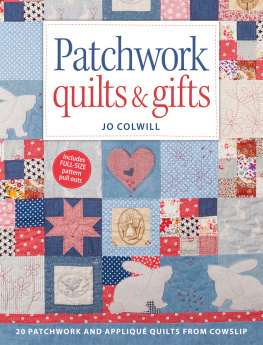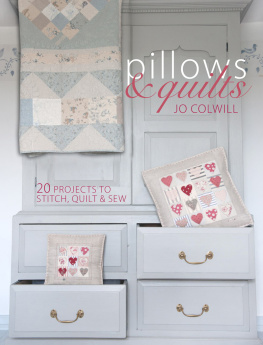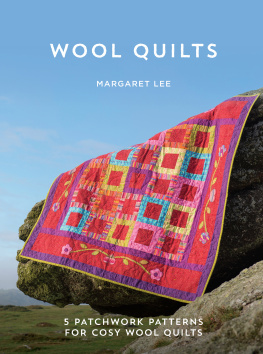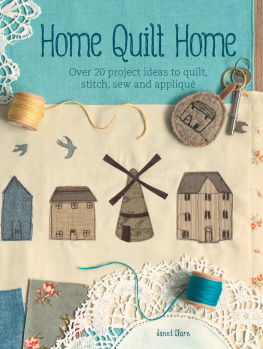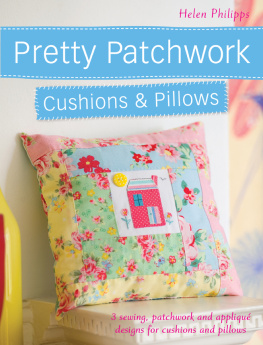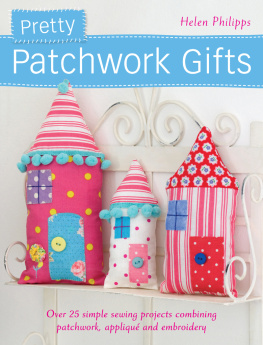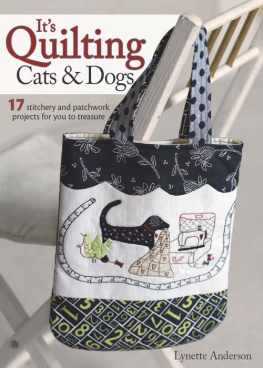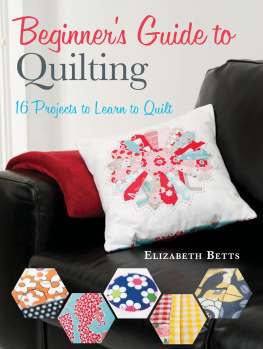Contents
Guide
Patchwork
quilts&gifts
JO COLWILL
20 PATCHWORK AND APPLIQU QUILTS FROM COWSLIP

www.stitchcraftcreate.co.uk
Dedication
I feel so lucky to be able to write a book, to have fun doing what I love sewing and quilting and to share this with all my friends around the quilting world. I dedicate this book to several of my dear friends who are, sadly, with us no more. Thank you for helping me and encouraging me through thick and thin you will be much missed.
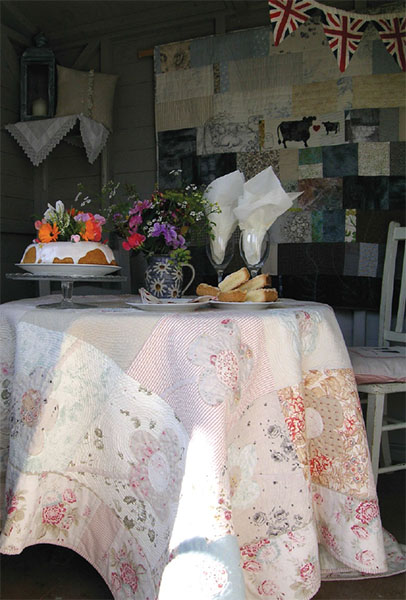
Contents
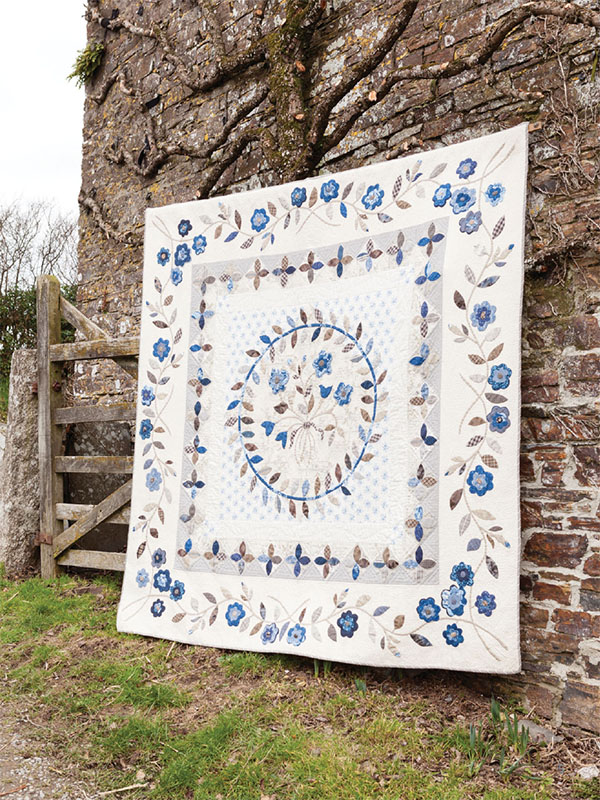
Introduction
To be asked to write one book is an honour, and a second is fantastic, so here is a fresh collection of my designs. I hope they will inspire you to create a range of quilts and gifts for your home, your family and your friends and get a great deal of pleasure along the way.
The designs in this book are inspired by the countryside where I live and also my travels to Scandinavia, so you will find a varied collection of ideas from rural motifs of rabbits, birds, dogs and horses, to floral and seasonal themes. There are projects that feature simple patchwork and relaxed appliqu, and others that are more time consuming and use much-loved blocks and traditional piecing.
Projects: The projects are a mix of techniques, including simple patchwork, more advanced piecing, various appliqu techniques, hand and machine quilting, and some hand embroidery. Some projects are suitable for confident beginners while others are more suited to quilters with wider experience. Do read all of the project instructions before you start a project, to familiarize yourself with what is required. The projects use a 14in (6mm) seam allowance, unless otherwise stated.
Tips: Additional advice and guidance is given in the form of tips throughout the book. Each project also has a gift ideas feature, with suggestions on who you might make the project for, and how you might adapt the it to create additional gifts from the design.
Measurements: Imperial and metric measurements have been given throughout the book, with metric in brackets (parenthesis). The projects were made using Imperial measurements, so the best results will be obtained using this system. The more adventurous projects, such as Scandinavian Journey and Vintage Bouquet, do need accurate piecing for the best results. I aim to achieve a high quality result in my quilting but I am mostly driven by the need to be creative and let the fabrics tend to tell the story. Measurements are important, especially for more advanced piecing, but I try not to let them get in the way of creating a piece of work that is enjoyable to make and pleasing to look at.
Fabrics: Fabric types and quantities are given in the You will need list at the start of each project. I have described the fabrics I used but the designs will suit a wide range of fabrics, so feel free to seek out your own choices. Fabric quantities are based on a 42in (107cm) width of fabric, unless otherwise stated. Colour is very personal and can be so uplifting I often bury myself in my fabric stash and then find that half the day has gone by. You may want to change my colour choices and thats fine. The projects are meant to be used, to be adapted and, hopefully, will inspire you to make more.
Diagrams: Drawings have been supplied to illustrate the stepped text where necessary. These are not to scale but are intended just to support the text.
Templates: Most of the projects use templates for the appliqu and quilting motifs and these have been provided full size. Most of the patterns are in the Template section at the back of the book, while some of the larger templates are on the pull-out pattern sheets. You can photocopy the templates for your own use if you wish to enlarge or reduce them.
Techniques: General techniques common to many of the projects are given in a section at the back of the book, with diagrams and photographs where needed. It is a good idea to read through this section before you start any project.
Appliqu methods: Most of the projects use appliqu in one form or another because I love it. Two methods have been used for the projects fusible web appliqu and hand needle-turn appliqu and both methods are described in detail in the General Techniques section. You can change a project to use the method of your choice, just remember that needle-turn appliqu requires a small seam allowance around each motif, usually 18in14in (3mm6mm). Fusible web appliqu does not need a seam allowance but the edges are usually oversewn in some way, either with free machine stitching or hand blanket stitch.
Patchwork, appliqu and quilting are such rewarding crafts, and are perfect for meeting up with friends and sharing ideas and skills. Without the support and help from my family and workmates I would never be able to achieve anything and am so grateful for their encouragement and support. I also have my four-legged friends, who are my inspiration. I hope you have fun making and adapting these projects for the loved ones in your life.
MATERIALS AND EQUIPMENT
Since I first started patchwork, the techniques and materials available have grown and developed immensely, especially over the last fifteen years. The fabrics and threads that are now on the market are amazing and exciting and we are so lucky to have excellent fabric shops and wonderful selections of fabric. I feel it is important, and fulfilling, to put your own stamp or love into a quilt, so do think about using an old dress or a childs outgrown clothing, as long as the material is still strong and colourfast. I only ever use cotton fabric, with the very rare exception of a label on a piece of clothing that is particularly special.
Wadding (batting) is the layer between the quilt top and the backing. It can be 2oz bonded polyester cotton (not too thick), or wool, which needs to be bonded or needle punched. The bonding or needle punching means that when you are quilting, the fibres do not pull through on the needle and beard on the quilt front, which is unsightly. For dark quilts, dark-coloured wadding is available. Whichever wadding you choose, make sure it is not too thick, as this makes it harder to get achieve small hand quilting stitches or to handle through the machine. Traditionally, the layers of a quilt were tacked (basted) together about every 6in (15cm) or so, and some people still like to do this. I now use a temporary adhesive called 505 see .
Basic tool kit
Each project has a list of fabrics and supplies you will need to make the project but the following is a list of useful general items.
- Quilters ruler
- Rotary cutter and mat
- Tape measure
- Iron
- Sewing machine
- Scissors
- Needles and pins
- Thimble
- Template plastic or thin card
- Fabric markers
- Fusible web
- Spray basting glue (such as 505 brand)
Horse and Dog Nine-Patch
This simple nine-patch block quilt is a good one to start your quilt-making career. It has a manly feel because I made it for my husband to cheer him up after an operation. I have chosen to feature prints of dogs and horses because we love them, but you could use other prints and more feminine colours. I wanted to use some lightweight linen horse prints that someone had given me, which balance well with denim. I pre-washed the fabrics to avoid shrinkage later. The quilt has mellow red quilting stitches and the odd cross stitch to give a warm feel.

